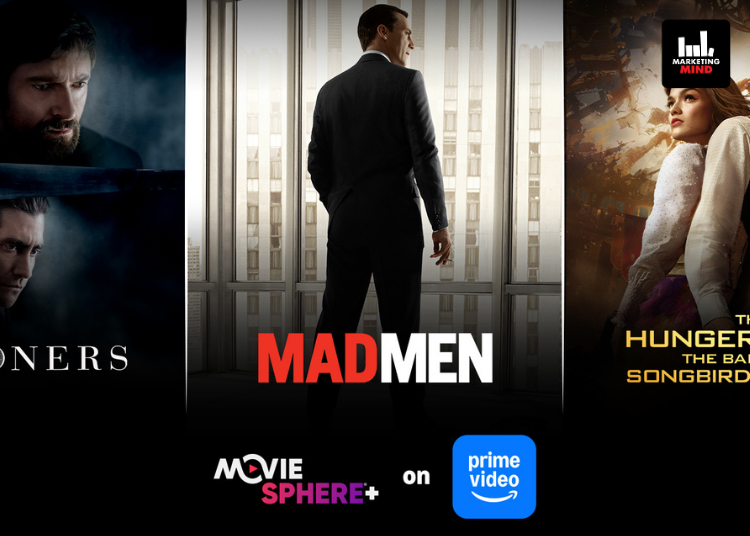The Competition Commission of India (CCI) on Wednesday granted approval for the merger of Reliance Industries with Disney’s Indian media assets, subject to compliance with certain voluntary modifications. This decision paves the way for the formation of a formidable media conglomerate.
The conditional approval of the $8.5 billion merger between Reliance and Disney has sparking a debate about the potential dominance of the newly formed entity.
Industry leaders anticipate significant implications for the media and entertainment (M&E) landscape, with substantial control over both TV and digital platforms. On the television front, the expected market share is approximately 40 to 45%, while digital platforms might capture a share ranging from 30 to 35%. Although losses are anticipated due to sports properties, adopting a subscription-based revenue model in the medium to long term is likely to mitigate these losses.
The merger of JioCinema and Disney+ Hotstar presents a significant challenge for global OTT platforms, given India’s market’s strong preference for bundling and sensitivity to pricing.
Unnati Agrawal, Partner, IndusLaw, highlighted that the conditional approval of the complex Reliance-Disney merger by the CCI, marks a significant development, not only in the Indian entertainment industry, but also in the Indian competition law landscape, as it cements the CCI’s place as a mature regulatory who adopts a facilitative approach in clearing complex transactions basis voluntary modifications offered by the parties.

“Previously, the CCI had expressed concerns that the merged entity, owing to its dominance over cricket broadcasting rights, could engage in unfair pricing which may adversely affect advertisers. It appears that both the parties and the CCI have engaged in meaningful discussions to come out with a solution to alleviate the competition concerns arising out of this merger,” Agrawal said.
Also read: CCI Raises Concerns Over Cricket Rights In Reliance-Disney Merger
Striking a similar tone, Karan Taurani, SVP at Elara Capital, stated that this is undoubtedly positive news, as the CCI typically poses a significant hurdle for such large mergers. With the CCI approval secured, the remaining NCLT process should take around 3 to 6 months, followed by shareholder and MIB approvals, which are not time-consuming. Based on this, it is expected that the merger will be finalised by early January or February of next year.

He also stated that the implications for the M&E landscape are significant, as it will exert substantial control over both TV and digital platforms. On the TV side, it is expected to capture a market share of around 40 to 45%, while on the digital side, the market share could range from 30 to 35%. This dominance presents considerable potential for further scaling and will likely lead to numerous business synergies.
“While losses are expected to persist due to sports properties, transitioning to a subscription-based revenue model over the medium to long term will likely reduce these losses. Overall, this shift is expected to have negative implications for the ecosystem but will positively impact the efficiency and functioning of the companies involved,” Taurani said.
Taurani believes that the merger of Viacom18 and Star India will have a big impact on the entire M&E ecosystem as the combined entity will command a huge market share. The merger will create a large media juggernaut with 108+ channels (Star India has 70+ TV channels in 8 languages whereas Viacom has 38 TV channels in 8 languages), two large OTT apps (JioCinema and Hotstar) and two film studios (one each of Reliance and Disney India).
“The consolidation between RIL and Disney on the India TV side could have a negative impact on other linear TV broadcasters, such as Sun TV, Zee, Sony, and others, as they may not be able to scale up on market share. The merged entity’s focus on maximising market share through increased investments in content, synergies, and enhanced marketing power poses challenges for individual broadcasters to compete and grow,” Taurani said.
“With a large customer base across various genres, including regional genres and Urban GEC, the combined entity aims to dominate key markets, potentially leading to market share loss and challenges for other players, including the possibility of smaller channels shutting down,” he added.
Furthermore, he went on to say that the merger of JioCinema and Disney+ Hotstar poses a challenge for global OTT platforms, as India’s market values bundling and is price sensitive. The combined entity can offer a comprehensive package including web series, movies, sports, originals, and a global catalogue. This bundled premium plan, possibly in collaboration with Jio’s large subscriber base, may hinder the ability of global OTT platforms to raise Average Revenue Per User (ARPU).
“Currently, both platforms are facing heavy losses due to high content costs, and JioCinema relies solely on AVOD without significant paid subscriber revenue. With the combination of Hotstar and JioCinema, the merged entity can enhance its subscription revenue by increasing subscription prices and attracting a larger subscriber base,” Taurani said.
“On the sports front, the merged entity is set to become monopolistic, with Disney and Jio collectively controlling approximately 75-80% of the Indian sports market across both linear TV and digital platforms. This dominance in sports, primarily cricket, positions them to command a substantial share of the overall ad market, showcasing strong growth in an industry where sports is a key driver of viewership on both linear TV and digital platforms,” he added.
He underscored that in CY22, sports adex (TV+Digital) in India stood at Rs 71 billion (according to GroupM) out of which Disney India had a contribution of 80%. The combined entity will have lucrative sports properties like Indian Premier League (both TV and digital), ICC cricket tournaments (both TV and digital), Wimbledon, Pro Kabaddi League, BCCI domestic cricket etc.
“The ad revenue potential from IPL is expected to increase significantly with the merged entity having exclusive rights (TV+Digital) to IPL. This consolidation may result in bundled advertisement revenues, potentially mitigating the higher cost of IPL rights and reducing overall losses; due to IPL rights being split between TV and digital between two different platforms and digital platform offering IPL free, there was a big dent in the IPL revenues on TV, which could see some respite,” he added.
While pointing out the challenges, Taurani stated that a below par customer experience on the video apps despite a wide variety of content may not augur well in subscribers paying for the same; global OTT giants like Netflix have a very superior experience to command a premium ARPU.
“Continuance of hefty losses of the merged entity over the near to medium term due to high costs of sports properties (IPL, ICC tournaments and BCCI bilateral rights) could negatively impact valuation prospects for the merged entity,” he added.
Also read: What Could Disney+ Hotstar & JioCinema Merger Spell For Advertisers, Competing Streaming Platforms?
While explaining what could the voluntary modifications by CCI be, Bharath Gangadharan, Counsel, SKV Law Offices, said that the CCI has granted approval for the $8.5 billion merger between Viacom18-Star India and Reliance, with Reliance and its affiliates holding 63% of the merged media assets and Walt Disney owning 36%. This approval is contingent upon the companies implementing certain voluntary modifications to address potential concerns raised by the CCI.

“While the CCI has not disclosed the specific modifications, it is anticipated that these changes will facilitate a smooth regulatory approval process. It is publicly known that the CCI raised specific objections concerning the cricket broadcasting rights within this merger. Additionally, the merging entities have reportedly offered to divest certain channels to secure the merger’s approval,” he said.
Furthermore, he highlighted certain legal hurdles that may come in the way of the merger, saying, “The merger’s impact on the pricing and contractual structure for television and streaming advertising is of particular interest. The merger may also have significant implications for the costs associated with streaming services. There remains a possibility of legal actions under Section 4 of the Competition Act of India if competitors in the media and entertainment sector allege abuse of dominant market position.”
Furthermore, the proposed remedies will undergo market testing, with the CCI likely engaging a monitoring agency to assess the outcomes and ensure compliance with the commitments made by the parties. The merging entities must collaborate closely with this agency to validate the proposed remedies and carefully manage their contractual relationships with advertisers and the planned divestitures.
He also emphasised that regarding concerns of a potential monopoly, the combined entity may hold a dominant position in certain market segments.
“However, under India’s Competition Laws, the CCI is tasked with preventing monopolistic practices and is expected to scrutinise any market changes resulting from this merger. The CCI’s proactive role should prevent the formation of a monopoly, ensuring competitive market conditions are maintained and any monopolistic tendencies are addressed,” he added.
















